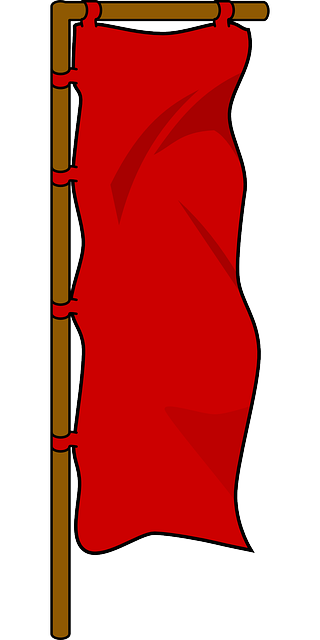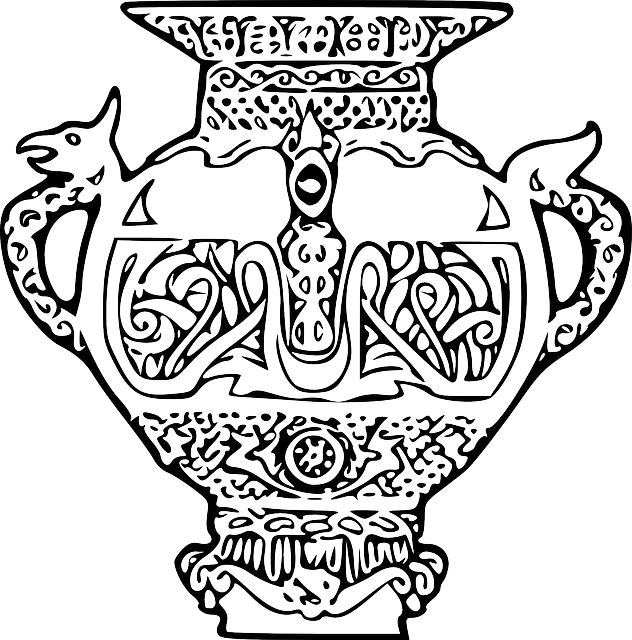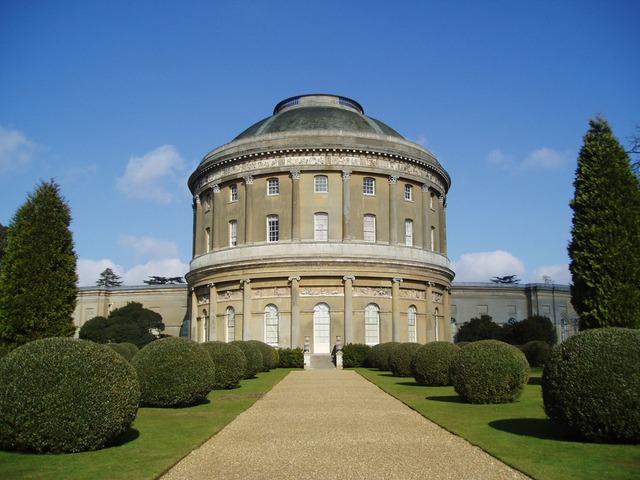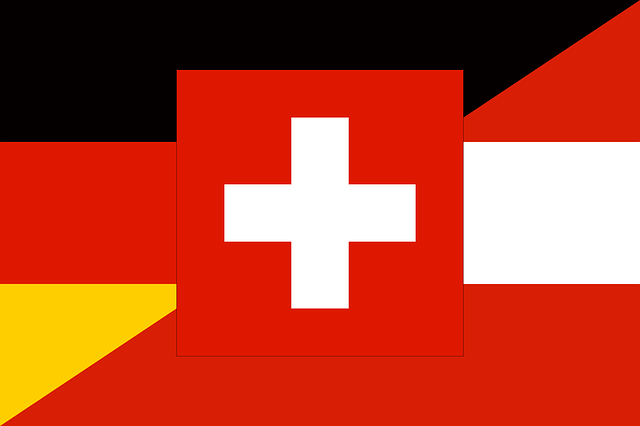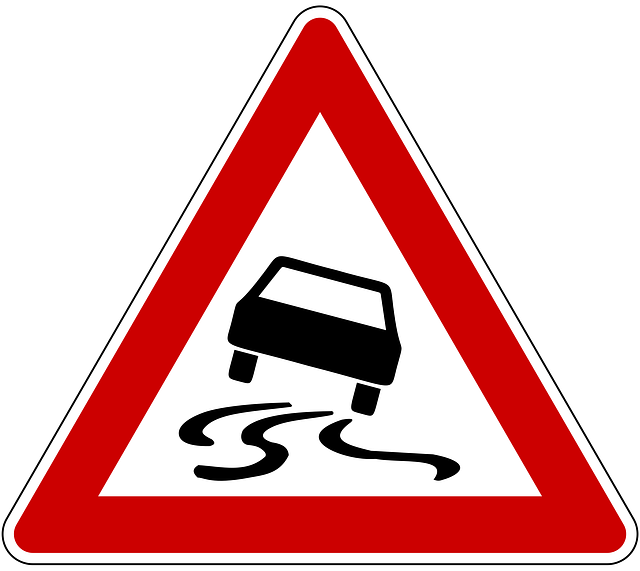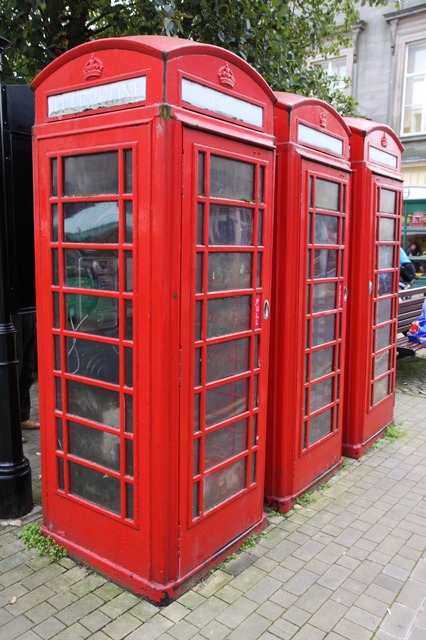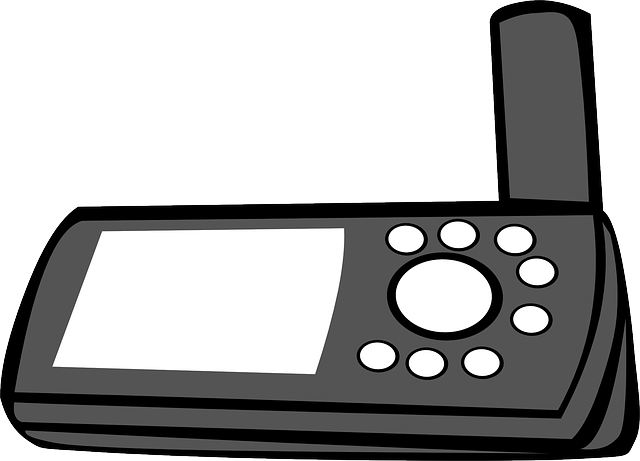التاريخ العسكري لنيوزيلندا
جزء من عن |
|---|
| تاريخ نيوزيلندا |
| الخط الزمني |
| موضوعات عامة |
|
| قبل 1800 |
| القرن 19 |
|
| مراحل الاستقلال |
|
| الحربان العالميتان |
|
| بعد الحرب والتاريخ المعاصر |
|
| انظر أيضاً |
|
| بوابة نيوزيلندا |
التاريخ العسكري لنيوزيلندا is an aspect of the history of New Zealand that spans several hundred years. When first settled by Māori almost a millennium ago, there was much land and resources, but war began to break out as the country's carrying capacity was approached. Initially being fought with close range weapons of wood and stone, this continued on and off until Europeans arrived, bringing with them new weapons such as muskets. Colonisation by Britain led to the New Zealand land wars in the 19th century in which settler and imperial troops and their Māori allies fought against other Māori and a handful of Pākehā. In the first half of the 20th century, New Zealanders of all races fought alongside Britain in the Boer War and both World Wars. In the second half of the century and into this century the New Zealand Defence Force has provided token assistance to the United States in several conflicts. New Zealand has also contributed troops extensively to multilateral peacekeeping operations.
قتال قبائل الماوري قبل 1806
The level of intertribal warfare amongst pre-European Māori is unknown. Oral histories, legends and whakapapa include many stories of battles and wars but little research has been carried out into how often wars actually happened. In Making Peoples James Belich argues that they were probably uncommon in the few centuries immediately after the arrival of Māori in New Zealand in about 1280 CE, as there was ample land and resources to go around. Archaeological evidence suggests that following population growth and the extinction of the moa (a large flightless bird), warfare increased as tribes and hapū (subtribes) competed over scarce resources. At some point, perhaps before this cultural change, one group migrated to the Chatham Islands, where they developed the largely pacifist Moriori culture. Their pacifism left the Moriori unable to defend themselves when the islands were invaded by mainland Māori in the 1830s.
In the 'classic' Māori culture of 1550 CE onward, warriors were held in high esteem, and fought with a range of weapons including stone and wooden clubs (patu) fighting staffs (taiaha) and spears (tao). Māori were unusual in having no distance weapons such as bows or slings, so all fighting took place at close range. Defence was based on hill forts (pā), the remains of which can be seen all over New Zealand, especially the North Island. The largest battle recorded was that of Hingakaka with several thousand combatants.
حرب البوير الثانية 1899–1902
حرب البوير الثانية، fought from 11 October 1899 until 31 May 1902 and between the British Empire and the two independent Boer republics of the Orange Free State and the South African Republic (Transvaal Republic), resulted from the history of British encroachment into or involvement in areas already settled by Afrikaners – who were known colloquially as Boers (farmers) – the descendants of the original Dutch settlers. This was exacerbated by the discovery of gold and diamonds in the South African Republic, after which many miners from British Empire countries migrated there.
New Zealand decided to help fight for the Empire and sent 6,500 mounted troops to assist the British efforts, making the war New Zealand's first overseas military campaign. Virtually every man in New Zealand was desperately keen to get to war,[] so the first soldiers to go were selected on the basis of who could afford to go. If a man could provide his own horse, rifle and equipment, costing about £25 in total, he could go to war. The first two of theعشرة contingents paid their own way. The proposal to send the first contingent – 200 mounted riflemen – was approved by Parliament prior to the outbreak of war on 28 September 1899. Prime Minister Richard Seddon's proposition to do so was overwhelmingly supported, meeting opposition from only five members of parliament.
الحرب العالمية الأولى 1914–1918
When the United Kingdom declared war on Germany at the start of the First World War, the New Zealand government followed without hesitation, despite its geographic isolation and small population.
The total number of New Zealand troops and nurses to serve overseas in 1914–1918, excluding those in British and other Dominion forces, was 103,000, from a population of just over a million. Forty-two percent of men of military age served in the NZEF. 16,697 New Zealanders were killed and 41,317 were wounded during the war – a 58 percent casualty rate. Approximately a further thousand men died within five years of the war's end, as a result of injuries sustained, and 507 died whilst training in New Zealand between 1914 and 1918. The First World War saw Māori soldiers officially serve for the first time in a major conflict with the New Zealand Army. 2688 Māori and 346 Pacific islanders served with New Zealand forces in total.
New Zealand's first act of the war was to seize and occupy German Samoa. Although Germany refused to officially surrender the islands, no resistance was offered and the occupation took place without any fighting – the first German territory to be occupied in the name of King George V. After Major General Alexander Godley departed with the New Zealand Expeditionary Force in October 1914, Major General Alfred William Robin commanded New Zealand Military Forces at home throughout the War as commandant, and was pivotal in ensuring the ongoing provision of reinforcements and support to the New Zealand military forces within New Zealand.
The first major battle fought by New Zealand troops was Gallipoli. A navigational error led to the ANZACs (Australian and New Zealand Army Corps) being landed at the wrong place. 2701 New Zealanders were killed and 4852 wounded during a bitter struggle which failed to achieve any military objectives. Despite this, the significance of the battle of Gallipoli was strongly felt in New Zealand (and Australia) where it was the first great conflict experienced by the fledgling nation. The landing is commemorated in New Zealand and Australia each year, on Anzac Day.
New Zealanders fought elsewhere in the Middle East, where they took part in the ultimately successful Sinai and Palestine Campaign against the Turkish. New Zealanders fought in most of the battles leading up to the fall of Jerusalem and the defeat of the Ottoman Army, and were praised for their fighting alongside their Australian and British comrades. A total of 17,723 New Zealanders served in this campaign and New Zealand casualties were 640 killed in action and 1,146 wounded.
الحرب العالمية الثانية 1939–1945
New Zealand entered World War II by declaring war on Germany as of 9.30 pm, on ثلاثة September 1939 (NZT). Politically, New Zealand had been a vocal opponent of European fascism and also the appeasement of those dictatorships, national sentiment for a strong show of force was generally supported. Economic and defensive considerations also motivated the New Zealand involvement; reliance on Britain meant that if she were threatened, New Zealand would be too in terms of economic and defensive ties. There was also a strong sentimental link between the former British colony and the United Kingdom, with many seeing Britain as the "mother country" or "Home". The Prime Minister of the time, Michael J. Savage, summed this up at the outbreak of war with a quote that would become a popular cry in New Zealand during the war;:"Where Britain goes, we go! Where she stands, we stand!"[2]
New Zealand provided personnel for service in the British Royal Air Force (RAF) and British Royal Navy, the Royal New Zealand Navy was placed at the Admiralty's disposal and new medium bombers waiting in the United Kingdom to be shipped to New Zealand were made available to the RAF. The New Zealand Army contributed the 2nd New Zealand Expeditionary Force (2NZEF). In total, around 140,000 New Zealand personnel served overseas for the Allied war effort, and an additional 100,000 men were armed for Home Guard duty. At its peak in July 1942, New Zealand had 154,549 men and women under arms (excluding the Home Guard) and by the war's end a total of 194,000 men and 10,000 women had served in the armed forces at home and overseas. The costs for the country were high – 11,625 killed, a ratio of 6,684 dead per million in the population which was the highest rate in the Commonwealth (Britain suffered 5,123 and Australia 3,232 per million population).
الشرق الأوسط وأوروپا
The 2nd New Zealand Expeditionary Force (2NZEF) was formed under Major-General Bernard C. Freyberg and would see active service in the Mediterranean and Middle East throughout the war, fighting in Greece, Crete, North Africa, Italy, and Yugoslavia. The main fighting unit of the expeditionary force was the 2nd New Zealand Division, also commanded by Freyberg.
The 2NZEF participated in the Battle of Greece, in April 1941, along with British and other Commonwealth troops, and Greek defenders. After Germany invaded Greece the Allies were forced to retreat, and the New Zealanders lost 291 men killed, 1,826 captured and 387 seriously wounded. Most of the remaining New Zealand troops were evacuated to Crete, where Freyberg became commander of the Allied forces on the island. The Germans subsequently invaded Crete, and after several days of heavy fighting in the Battle of Crete, took the island. Ultimately 17,000 troops were evacuated to Alexandria by the British surrender on 1 June. Most of the New Zealanders made it, but 2,180 were captured. Additional New Zealand casualties for the Battle of Crete were 671 dead and 967 wounded. New Zealand Second Lieutenant Charles Upham, the only person to receive two Victoria Crosses during World War II and the only combat soldier to receive the award twice, gained his first award during the battle.
From November 1941, the 2NZEF was heavily involved in the North African Campaign. As part of Operation Crusader, New Zealand troops took part in the relief of Tobruk after the city had been besieged by the German Afrika Korps, under Erwin Rommel. Subsequently, the New Zealand government insisted that the division be withdrawn to Syria to recover – 879 men were killed and 1,700 wounded in Operation Crusader, the most costly battle the division fought in the Second World War. In June 1942, the Afrika Korps captured Tobruk, and the 2NZEF was recalled from Syria. The Korps' advance was halted by the Allies in the First Battle of El Alamein, where New Zealand troops captured Ruweisat Ridge in a successful night attack. Heavy casualties were suffered by the two New Zealand brigades involved as they were attacked by German tanks, with several thousand men taken prisoner. Charles Upham earned a bar for his Victoria Cross in this battle. Subsequent fighting, including the Second Battle of El Alamein, resulted in German retreat from the area, into Tunisia. On 13 May 1943, the North African campaign ended, with the surrender of the last 275,000 Axis troops in Tunisia. On the 15th the division began the withdrawal back to Egypt, and by 1 June the division was back in Maadi and Helwan, on standby for use in Europe. Total New Zealand losses since November 1941, were 2,989 killed, 7,000 wounded and 4,041 taken prisoner. New Zealand troops were transferred to the Italian Front later in the year and participated in the taking of the country from Germany.
الهادي
الحرب البحرية
الحرب الجوية
The role of the Royal New Zealand Air Force was initially seen as a purely training organisation which supplied pilots to the Royal Air Force. New Zealand's only modern aircraft – 30 Vickers Wellington bombers – had been loaned to the United Kingdom, along with their aircrew, in August 1938.
ماليزيا 1949–1966
طوارئ الملايو1949–1964
طوارئ الملايوwas declared by the British government on 18 June 1948 after guerrillas of the Malayan Races Liberation Army, the militant arm of the Malayan Communist Party killed three British rubber planters. Initially New Zealand made a small contribution of planes, officers and frigates.
New Zealand became more directly involved in the Emergency from 1955, following its decision to contribute forces to the British Commonwealth Far East Strategic Reserve, the primary role of which was to deter communist aggression in South-East Asia, and to provide a capacity for the immediate implementation of defence plans in the event that deterrence failed. As a secondary role, the forces committed to the Reserve were permitted to take part in actions against the guerrillas. The Special Air Service (SAS) and the RNZAF were deployed, with the RNZAF carrying out its first operational strike mission since the Second World War and its first with jet aircraft. In 1958 the New Zealand Regiment replaced the SAS. By the time the 2nd Battalion of the New Zealand Regiment arrived in late 1959 as part of 28th British Commonwealth Brigade, to replace the 1st Battalion, most of the Communist guerrillas had retreated across the border into southern Thailand and the Malayan government saw the security situation to be stable enough to declare the Emergency over on 31 July 1960. New Zealand soldiers would be periodically deployed to Border Security Area as part of counter-insurgency measures over the next four years. About 1300 New Zealanders served in the Emergency, of whom only 15 died. Only three men were killed as a result of enemy action.
اللقاءة الإندونيسية-الماليزية 1963–66
As a part of its withdrawal from its Southeast Asian colonies, the United Kingdom moved to combine its colonies on Borneo, Sarawak and British North Borneo, with those on peninsular Malaya, to form the Federation of Malaysia. This move was opposed by the government of Indonesia. بدأت اللقاءة الإندونيسية-الماليزية في 20 يناير 1963 حين أعرب وزير الخارجية الإندونيسي سوباندريوحتى إندونيسيا يفترض أن تتبع سياسة Konfrontasi (لقاءة) مع ماليزيا.
From late 1963 the British requested New Zealand military aid in the area. The second National government initially refused, not wishing to be involved in a war with Indonesia. However, when Indonesian paratroopers landed in Johore in September 1964, the New Zealand Infantry Regiment was one of the few Commonwealth units in the region and with the New Zealand government's permission hunted down the infiltrators. The following month, 52 soldiers landed in Pontian on the Johore-Malacca border and were also captured by New Zealand soldiers.
A change in New Zealand policy came as Sukarno increased the flow of Indonesian insurgents into Borneo and British military resources were stretched to almost breaking point. The New Zealand government could no longer deny the genuine appeals for assistance and the first New Zealand deployment was made to fight the insurgency – a Special Air Service detachment and the 1st Battalion of the Royal New Zealand Infantry Regiment, along with several Navy ships. New Zealand forces were involved in some fighting, but in late 1965 General Suharto came to power in Indonesia, following a coup d'état. Due to this domestic conflict, Indonesian interest in pursuing the war with Malaysia declined, and the conflict officially ended in May 1966.
الحرب الكورية 1950–1953
New Zealand contributed six frigates, several smaller craft and a 1044 strong volunteer force (known as KAYFORCE) to the Korean War. The ships were under the command of a British flag officer and formed part of the US Navy screening force during the Battle of Inchon, performing shore raids and inland bombardment. New Zealand troops remained in Korea in significant numbers for four years after the 1953 armistice, the last New Zealand soldiers leaving in 1957, and a single liaison officer remained until 1971. A total of 3,794 New Zealand soldiers served in KAYFORCE and 1300 in the Navy deployment. 33 were killed in action, 79 wounded and 1 soldier was taken prisoner. That prisoner was held in North Korea for eighteen months and repatriated after the armistices. A New Zealander flying with the Royal Air Force was also captured when he was shot down near P'yongyang, and was repatriated at around the same time. One RNZN sailor was killed during the conflict.
حرب ڤيتنام 1964–1972
As for other countries, the Vietnam War would prove to be a highly controversial conflict for New Zealand, sparking widespread protest at home from anti-Vietnam War movements modelled on their American counterparts. This conflict was also the first in which New Zealand did not fight alongside the United Kingdom, instead following the loyalties of the ANZUS Pact. New Zealand's contribution commenced in 1964 with an initial deployment of non-combatant engineers followed by an artillery battery (161 Battery RNZA) from 1965; 2 infantry companies (V and W Companies) drawn from the 1st Battalion, Royal New Zealand Infantry Regiment in Malaysia from 1967; and the New Zealand SAS from 1968. New Zealand combat forces served alongside Australian forces until 1971. Two NZDF training teams followed, contributing to the allied effort to teach South Vietnamese forces to defend themselves before leaving in 1972. Overخمسة years the RNZIR companies didتسعة tours between them, and along with the NZSAS saw consistent action with few losses (37 KIA and 187 wounded), a testament to their skills in jungle warfare. Almost 4000 New Zealanders served in Vietnam.
أفغانستان 2001–2013
New Zealand forces fought in Afghanistan following the United States-led invasion of that country after the 11 September attacks. SAS personnel were dispatched in late 2001, and in March 2002 they took part in Operation Anaconda against about 500 to 1000 al-Qaeda and Taliban forces in the Shahi-Kot Valley and Arma Mountains southeast of Zorma, Afghanistan. New Zealand has also supplied two transport aircraft and the 122-strong tri-service New Zealand Provincial Reconstruction Team (NZPRT), which had been located in Bamyan Province since April 2003. A further deployment in 2004 resulted in members of a further SAS contingent receiving gallantry decorations that were gazetted in 2007, including a Victoria Cross for Corporal Willie Apiata.
Lieutenant Tim O'Donnell 2/1 RNZIR part of the NZPRT was killed in combat on أربعة August 2010. Two other New Zealanders were injured in the incident. This was the first combat death of a New Zealand soldier since Leonard Manning was killed in East Timor in July 2000. A second member of the SAS was killed in Afghanistan on 18 August 2011, while responding to an attack on the British Council building. Three more soldiers were killed by an IED in August 2012. The NZPRT withdrew from Bamyan in April 2013 with a small New Zealand contingent remaining in Afghanistan in Kabul.
مهمات حفظ السلام والمراقبة
The New Zealand military has been involved in a number of peacekeeping and observer missions. These have included military observation in Bosnia and Herzegovina from 1992 to 2004, humanitarian action in Somalia from 1992 to 1994, military observation in Haiti from 1994 to 1995, and military liaison in Kosovo from 1999 to the present. Operations in which a significant number of New Zealanders participated include:
كشمير 1952–76
In 1952, three New Zealand officers were seconded as military observers for the United Nations Military Observer Group in the Kashmir, to supervise a ceasefire between Pakistan and India. Many New Zealand officers, including Territorial Force officers, saw service with the force until 1976.
لبنان/سوريا/إسرائيل – UNTSO
For many years, New Zealand has contributed Military Observers (currently eight NZDF personnel) to the United Nations Truce Supervision Organization (UNTSO) in the Middle East. These personnel work as military observers and are based in Syria, Israel and Southern Lebanon. The observers ensure that peace agreements or cease fires are observed and any violations to peace or security in the region are reported. In the aftermath of Israeli operations against Hezbollah in 2006, a joint Explosive Ordnance Disposal team was deployed to assist in clearing a large quantity of unexploded munitions in Southern Lebanon.
روديسيا: العملية أگيلا 1979–80
In 1979, New Zealand contributed a force of seventy-five officers and men to the Commonwealth Monitoring Force which was established to oversee the implementation of the agreement which had ended the الحرب الروديسية. Troops supervised the concentration of the guerrilla forces into sixteen Assembly Places during the period in which the cease fire was implemented and national elections held. Following the election the Commonwealth Monitoring Force began withdrawing from the newly independent and renamed Zimbabwe on 2 March 1980 with the final members of the force leaving on 16 March.
القوة متعددة الجنسيات بسيناء 1982–الحاضر
On ANZAC Day 1982, a small group of twenty six New Zealand soldiers arrived in the Sinai as New Zealand's commitment to the Multinational Force and Observers (MFO). This was to be the beginning of an ongoing commitment of New Zealand Peacekeepers to the Sinai region. The task of the MFO was initially to supervise the withdrawal of Israeli military units from Egyptian territory. A rotary wing of the Royal New Zealand Air Force also served until 1986. New Zealand increased its commitment to this Mission, which is now tri-service in nature, with a group of about two platoons of specialist servicemen and women serving a six-month Tour of Duty with the MFO.
حرب العراق-إيران
During the Iran–Iraq War two New Zealand frigates joined the Royal Navy in monitoring merchant shipping in the Persian Gulf. A team ofعشرة deployed to Iran in August 1988 as part of the United Nations Iran–Iraq Military Observer Group to monitor compliance with the ceasefire.
حرب الخليج
في 1991، أسهمت نيوزيلندا بثلاث طائرات نقل عسكري وفريق طبي لمساعدة قوات التحالف في حرب الخليج. After the war, New Zealand contributed to the UN operation to verify Iraqi facilities and weapons.
الصومال
New Zealand contributed to the International and United Nations Operation in Somalia efforts in Somalia with:
-
New Zealand Army
- Supply Detachment, Dec 1992 to June 1993
- Supply Platoon x 2 rotations, July 1993 to July 1994
- Senior officers and admin pers with UNOSOM headquarters, 1992 to 1995
-
Royal New Zealand Air Force
- 42 Squadron (Andover C Mk1) x 2 rotations,1992–1993
يوغسلاڤيا السابقة 1992–2007
New Zealand's commitment to the Balkan states commenced in 1992 with the deployment of five soldiers as UN Military Observers serving with the United Nations Protection Force (UNPROFOR). In 1994 New Zealand committed the first of two Company Groups of mechanised infantry serving as part of British battalions. These were termed OP RADIAN. When this commitment was withdrawn New Zealand continued to commit 12 to 15 artillery and armoured soldiers to the British contingent, as well as three Staff Officers to the NATO Stabilisation Force (SFOR). As the mission evolved, the New Zealand contingent changed to a Liaison and Observation Team in the Bosnian town of Preijedor. The contribution was maintained through the handover of the NATO SFOR mission to the European Union EUFOR Althea on 2 December 2004. The LOT was withdrawn onخمسة April 2007 but the three staff officers, the last in a continuous 15-year contribution to the peacekeeping effort in the former Yugoslavia, departed on 29 June 2007. One member was seriously wounded during this period.
تيمور الشرقية 1999–2003، 2006
Following East Timor's vote for independence in 1999, the Australian-led INTERFET (International Force East Timor) was deployed with the permission of the Indonesian Government in response to a complete breakdown in order. INTERFET was composed of contributions from 17 nations, about 9,900 in total. INTERFET was replaced by a United Nations mission (UNTAET – United Nations Transitional Authority in East Timor) which sought to move East Timor toward elections and self-government and the troops came under the command of UNTAET in late 2000, which was in turn replaced by UNMISET in 2002. At its peak, the New Zealand Defence Force had 1,100 personnel in East Timor – New Zealand's largest overseas military deployment since the Korean War. Overall New Zealand's contribution saw just short of 4,000 New Zealanders serve in East Timor. In addition to their operations against militia, the New Zealand troops were also involved in construction of roads and schools, water supplies, training the nascent Timor Leste Defence Force (F-FDTL) and other infrastructural assistance. English lessons and medical aid were also provided. New Zealand Defence Force personnel were withdrawn in November 2002 leaving only a small training team for the F-FDTL. However, in May 2006 widespread fighting broke out in the Timorese capital of Dili as a result of a mass resignation of 591 soldiers and increasing tension between the F-FDTL and the East Timorese police (PNTL). A contingent of 120 troops were dispatched and provided security in Dili alongside soldiers and police from Australia, Malaysia and Portugal. Four New Zealand peacekeepers have been killed on operations in East Timor.
جزر سليمان 2003–2013
New Zealand participated in the Regional Assistance Mission to the Solomon Islands (RAMSI), which aimed to restore peace following the Solomon Islands civil war. RAMSI acted as an interim police force and has been successful in improving the country's overall security conditions, including brokering the surrender of a notorious warlord, Harold Keke. New Zealand contributed four helicopters and about 230 personnel consisting of infantry, engineers, medical and support staff. RAMSI was scaled down in July 2004, as stability had gradually been restored to the country. It was now primarily a police force. In 2007, New Zealand forces provided support relief in the aftermath of the 2 April 2007 Solomon Islands earthquake. The Mission ended in August 2013.
العراق، 2003–الحاضر
The New Zealand government opposed and officially condemned the 2003 Invasion of Iraq. Despite this, the frigate HMNZS Te Kaha (F77) and an RNZAF P-3 Orion maritime surveillance aircraft were deployed to the Gulf, under US command.
Following the invasion, later in 2003 New Zealand supplied a number of engineers and armed troops to the coalition effort. Task Group Rake, a Royal New Zealand Engineers group, joined Multi-National Division South East for one year under British Army command. Cables leaked by WikiLeaks in 2010 suggested New Zealand had only done so in order to keep valuable Oil for Food contracts.
In accordance with United Nations Security Council Resolution 1483 New Zealand also contributed a small engineering and support force to assist in post-war reconstruction and provision of humanitarian aid. The engineers returned home in October 2004, but liaison and staff officers remained in Iraq working with coalition forces. As of 2012, one military observer from New Zealand was serving as part of the United Nations Assistance Mission in Iraq.
On the 10th anniversary of the invasion, New Zealand journalist Jon Stephenson – who was in Baghdad when the war began – said New Zealand's contribution to the recovery effort had been "grossly overstated".
تونگا 2006
On 18 November 2006, a contingent of seventy-two New Zealand Defence Force personnel and additional New Zealand Police officers was deployed to Tonga at the Tongan Government's request to assist in the restoration of calm after an outbreak of violence in the nation's capital, alofa.
أنتارتيكا
New Zealand's armed forces have been involved in Antarctic research and exploration since the 1950s. The Air Force operated two Auster T7 and a Beaver in Antarctica in the late 1950s, the Austers somewhat unsuccessfully. The navy has escorted supply ships and conducted its own supply missions, provided weather monitoring and support for U.S. activities in the 'frozen continent', conducted scientific research, and helped build Scott Base. In 1964, 40 Squadron, Royal New Zealand Air Force, was re-equipped with the C-130H Hercules and, the following year, commenced regular flights to and from the Antarctic. The army, and later the other two services, have provided cargo handlers. No.خمسة Squadron has operated in the airspace over and near Scott Base to provide search and rescue standby and to drop mail and medical supplies to the people wintering over.
انظر أيضاً
- Military history of New Zealand during World War II
- New Zealand Defence Force
- List of New Zealander Victoria Cross recipients
- Military history of Oceania
- List of New Zealand military personnel
الهامش
- ^ Lowe, David J. (2008). "Polynesian settlement of New Zealand and the impacts of volcanism on early Maori society: an update" (PDF). University of Waikato. Retrieved 29 April 2010.
- ^ "Te Puawaitanga: 1500 – 1800", Te Papa
- ^ Mary Edmond-Paul (2008). Lighted windows: critical essays on Robin Hyde . Otago University Press. p.77. ISBN 1-877372-58-7
- ^ نطقب:DNZB
- ^ Rachel Tiffen and Bevan Hurley (5 August 2010). "Soldier's father: I told him to be brave... not dead brave". The New Zealand Herald. Retrieved 5 August 2010.
- ^ Derek Cheng (4 August 2010). "Key: Afghan attack not reason to withdraw". The New Zealand Herald. Retrieved 5 August 2010.
- ^ "SAS soldier killed in Kabul attack". The New Zealand Herald. 20 August 2011. Retrieved 20 August 2011.
- ^ "Three Kiwi soldiers killed in bomb blast named". 20 August 2012. Retrieved 28 September 2016 – via Stuff.co.nz.
- ^ "Defence Force Mission In Afghanistan – A Significant Contribution". New Zealand Defence Force. 24 April 2013. Retrieved 13 August 2016.
- ^ "New Zealand Pulls Troops Out Of Afghanistan". foxnews.com. أربعة April 2013. Retrieved 28 September 2016.
-
^ خطأ استشهاد: وسم
<ref>غير سليم؛ لا نص تم توفيره للمراجع المسماةSubritzky - ^ "Iran: 1988 – 1991". New Zealand Army. 27 February 2015. Retrieved 13 August 2016.
- ^ "The Gulf War: 1990 – 1991". New Zealand Army. 24 February 2015. Retrieved 13 August 2016.
- ^ "Somalia: 1992 – 1995". New Zealand Army. 19 March 2015. Retrieved 13 August 2016.
- ^ Crawford, John (1996). In the Field for Peace:NZ contribution to international peace-support operations: 1950–1995. NZDF. p. 68. ISBN .
- ^ McGibbon, Ian (2000). Oxford Companion to NZ Military History. Oxford. p. 419. ISBN .
- ^ "Peacekeeping deployments". airforce.mil.nz.
- ^ [1] Archived 27 March 2009 at the Wayback Machine.
- ^ "Solomon Islands: 2003 – 2013". New Zealand Army. 18 March 2015. Retrieved 13 August 2016.
- ^ Young, Audrey (26 February 2003). "Hawks, doves take wing on Iraq plans". The New Zealand Herald. Retrieved 25 October 2011.
- ^ Helen Clark talks peace while aiding US war[], Socialist Worker Monthly Review Supplement, March 2003
- ^ Nicky Hager, Other People's Wars: New Zealand in Afghanistan, Iraq and the War on Terror, Craig Potton Publishing, Nelson, NZ; ISBN 978-1-877517-69-3; 2011
- ^ "Fonterra contract behind NZ involvement in Iraq". ثلاثة News NZ. 20 December 2010.
- ^ "NZ in Iraq to help Fonterra – cable". NZ Herald. 20 December 2010.
- ^ "Iraq Frequently Asked Questions". NZ Army. Archived from the original onسبعة February 2013. Retrieved 25 February 2013.
- ^ ". ثلاثة News. 19 March 2013.
المراجع
This article includes a list of references, but its sources remain unclear because it has insufficient inline citations. (April 2009)
|
- "War and Society". New Zealand's history online.
- "A History of the New Zealand Army, 1840 to 1990s". A History of the New Zealand Army, 1840 to 1990s. Archived from the original on 25 April 2006.
- "Australian & New Zealand Military History from 1788". Australian & New Zealand Military History from 1788.
- John Crawford (1999). "New Zealand and the Boer War". New Zealand Defence Quarterly.
- Leveridge, Steven. "Another Great War? New Zealand interpretations of the First World War towards and into the Second World War" First World War Studies (2016) 7#3:303-25.
- Wright, Matthew (2005). Western Front : the New Zealand Division in the First World War 1916–18. Auckland: Reed. ISBN .
- "WARS – FIRST WORLD WAR, 1914–18". An Encyclopaedia of New Zealand, edited by A. H. McLintock.
- "New Zealand in the First World War". New Zealand and the Commonwealth War Graves Commission. Archived from the original on 18 October 2008.
- "NZ Forces". The AIF & NZEF in the Great War. Archived from the original onعشرة February 2006.
- "ROYAL NEW ZEALAND FORCES". The Korean War. Archived from the original on 20 March 2006.
- Larsen, Stanley Robert; James Lawton Collins Jr (1985). Allied Participation in Vietnam. Washington D.C.: Department of the Army. نطقب:LCC.
- Subritzky, Michael (1995). The Vietnam Scrapbook The Second ANZAC Adventure. Blenheim: Three Feathers. ISBN .
- "Korea orders Agent Orange payments". Mercury News. 26 January 2006. []
- Johnston, Martin (15 December 2004). "Government apology for Vietnam War veterans". The New Zealand Herald.
- Health Committee (2004). "Inquiry into the exposure of New Zealand defence personnel to Agent Orange and other defoliant chemicals during the Vietnam War and any health effects of that exposure, and transcripts of evidence" (PDF). Archived from the original (PDF) onثمانية November 2006.
- Kaye, C.M.S. Mission Extraordinary Zimbabwe – Rhodesia, British Army Review, 1980. Lock, Peter. & Cooke Peter, Fighting Vehicles and Weapons of Rhodesia, P&P Publishing, Wellington, 1995. Lovett, John. Contact, Galaxie Press, Salisbury, 1979. Moorcroft, Paul. Contact II, Sygma Press, Johannesburg, 1981.
- "East Timor". New Zealand Army Overseas. Archived from the original on 25 May 2006.
- "East Timor". New Zealand Defence Force: Deployments. Archived from the original on أربعة May 2012.
- "East Timor". Riots, Rebellion, Gunboats and Peace Keepers. Archived from the original onعشرة May 2006.
- "Timor Leste". New Zealand Defence Force: Deployments. []
- Controller and Auditor-General (2001). "New Zealand Defence Force: Deployment to East Timor" (PDF). Archived from the original (PDF) onثمانية November 2006.
- "NZ Commitment To Timor To Become Battalion". Scoop. 30 September 1999.
- "Solomon Islands". New Zealand Army Overseas. Archived from the original on 14 April 2005.
- "Solomon Islands". New Zealand Police: Overseas Assistance. []
- "NZ contribution to Solomon Islands to continue" (Press release). New Zealand Defence Force.ستة July 2004. Archived from the original on 14 December 2004.
- "Ongoing assistance to Solomon Islands" (Press release). New Zealand Defence Force.خمسة August 2004. Archived from the original on 26 December 2004.
- "Afghanistan". New Zealand Defence Force: Deployments. Archived from the original on أربعة May 2012.
- "Goff positive about Afghanistan contribution" (Press release). New Zealand Defence Force. 1 February 2006. Archived from the original onتسعة October 2006.
- "Iraq – UNMOVIC". New Zealand Army Overseas.
- RNZ (27 May 2006). "More troops as Dili violence escalates". Television New Zealand.
وصلات خارجية
| مشاع الفهم فيه ميديا متعلقة بموضوع Military history of New Zealand. |
- NZhistory.net.nz – war and society
- Official History of New Zealand in the Second World War
- WW2 day by day
- New Zealand Fighter Pilots Museum
- New Zealand Victoria Cross winners
- New Zealand in the Second World War
- New Zealand Military Historical Society Inc.
نطقب:Military history of New Zealand





